Bees are in big trouble. The good news is that virtually all ecologically literate North Americans will tell you that. The bad news is they’re worried about the wrong bees — honey bees.
Honey bees don’t belong in North America; they’re domesticated aliens from Europe. “Worrying about their extinction is like worrying about the extinction of cattle,” declares native-bee activist and acclaimed wildlife photographer Clay Bolt.
But North America could lose many of its roughly 4,000 native bee species. For example, applying criteria of the International Union for Conservation of Nature, the Xerces Society for Invertebrate Conservation reports that of the 46 indigenous bumble bee species in the U.S. and Canada 28 percent are at some risk of extinction.
While bumble bees aren’t well understood, they’re well loved. They are so good-natured that getting a female to sting you (males can’t) is a major undertaking. Proceed carefully and you can even stroke her Teddy-bear-like fur. That fur, along with ability to regulate body temperature, allows bumble bees to be out and about on cold mornings long before honey bees rev up. Bumble bees have even been seen 1,055 miles north of the Arctic Circle.
In late winter while most insects are dormant or unhatched, queen bumble bees, the biggest bees you’ll see all year, start searching for nest sites. The queen’s flight is not wild and erratic as Rimsky-Korsakov’s operatic score implies, but slow, low and deliberate. Frequently she’ll select an abandoned rodent hole, camouflage it with leaves, moss or grass, then fashion a wax pot and fill it with honey. Finally, she’ll knead pollen into “bee bread.” The honey will sustain her while she’s brooding the year’s new colony. The bee bread will nourish the larvae.
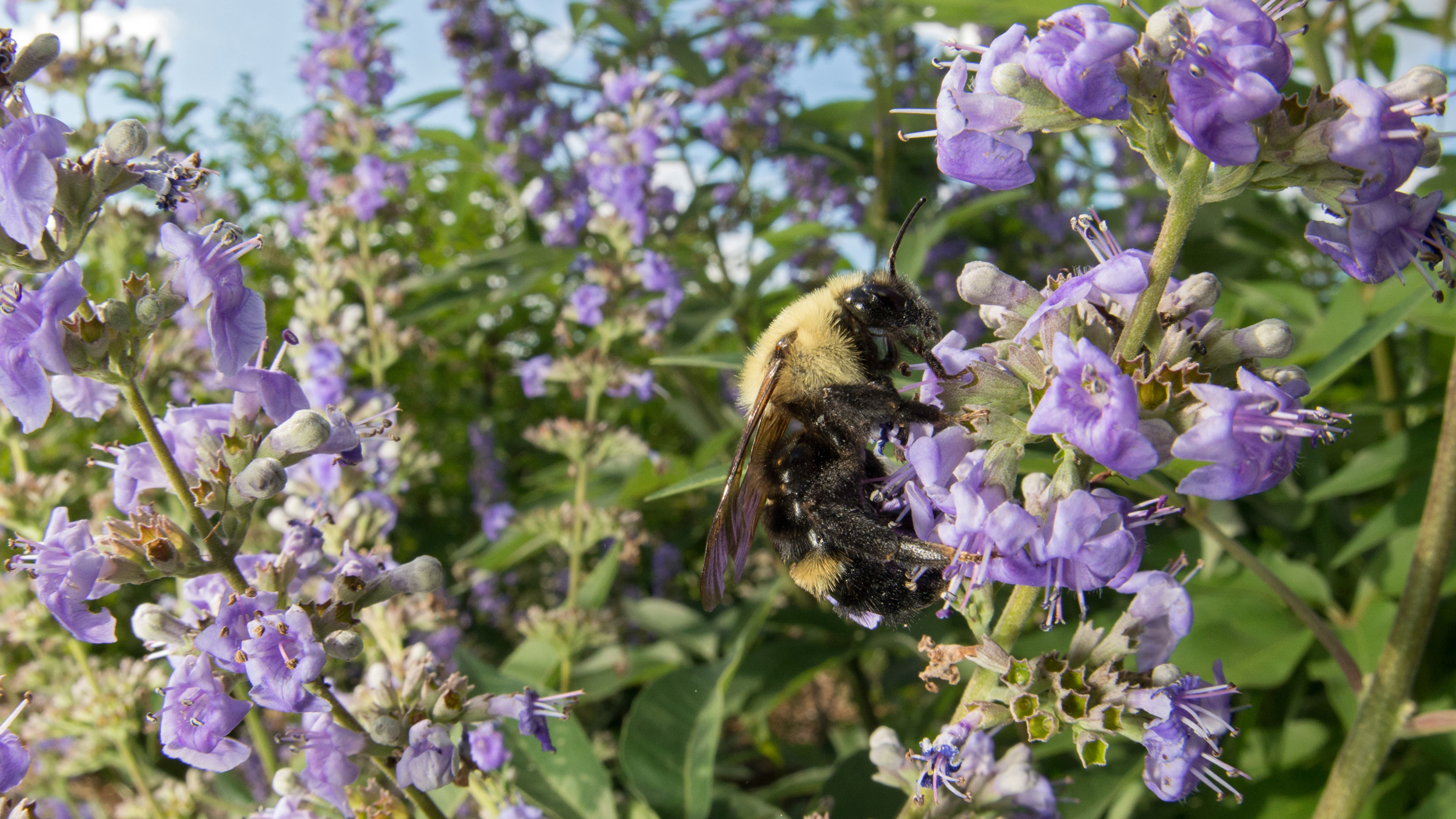
Six of the continent’s bumble bee species are cowbird-like brood parasites; queens lay eggs in nests of other bumble bees and let the workers rear their young.
Honey bees are far from the main threat to bumble bees; but they compete with them thus reducing their reproduction and body size. And while both honey bees and bumble bees are important pollinators, bumble bees are frequently more efficient. Unlike honey bees, they can “buzz pollinate,” seizing a flower in their jaws and forelegs and vibrating their wing muscles to shake pollen from the anther. This ability makes bumble bees important for pollinating a wide variety of wild and cultivated plants. Bumble bees help sustain all manner of things prized by humans from tomatoes to grizzly bears.
The wildlife management establishment has traditionally ignored native bees. But that’s starting to change thanks to bee advocates led by the Xerces Society, Clay Bolt, Dr. Sydney Cameron of the University of Illinois and Dr. Robbin Thorp of the University of California at Davis.
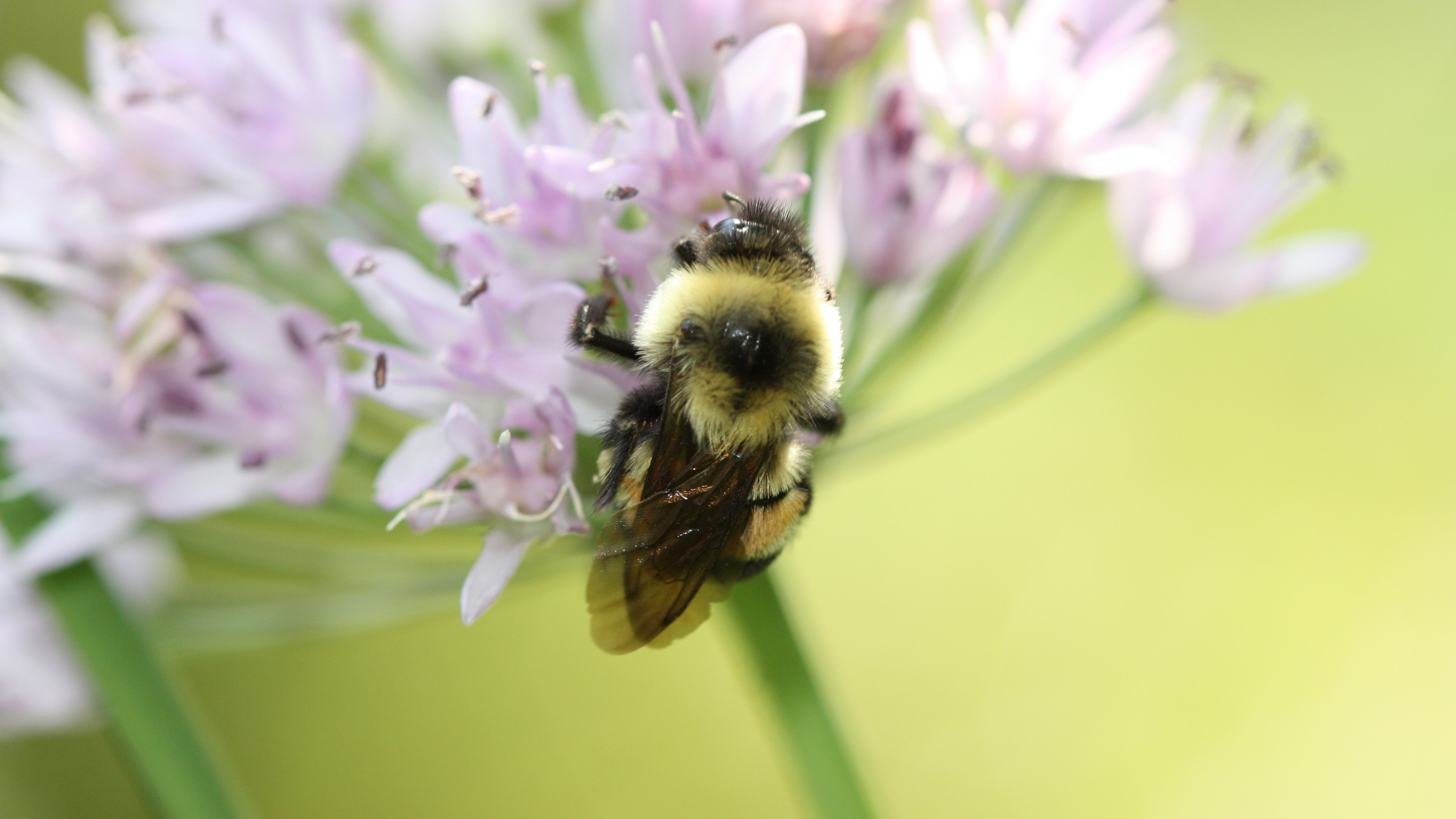
On March 22, 2017 the rusty patched bumble bee became the first bee in the continental U.S. to be listed as endangered by the U.S. Fish and Wildlife Service. The publicity is awakening managers and the public to the importance of native bees. In addition to sustaining native ecosystems they provide pollination services to American farmers worth $9 billion per year. “The listing of the rusty patched bumble bee has the potential to become a landmark case for pollinator protection,” remarks Bolt.
Rousting the feds to action was a challenge. The process started in 2010 when the Xerces Society, the Natural Resources Defense Council, Defenders of Wildlife and Thorp, alarmed about the rapid spread of bee diseases and parasites, petitioned the Animal and Plant Health Inspection Service (APHIS) to regulate interstate transport of bumble bees commercially bred for greenhouse pollination. APHIS didn’t respond for almost four years, then declined to do anything significant.
In 2013 the Xerces Society petitioned the Fish and Wildlife Service to list the rusty patched bumble bee as endangered. By law the agency has 90 days to decide if a petition for listing has merit. Nine hundred days later it hadn’t made a decision. Eventually a Xerces lawsuit elicited action.
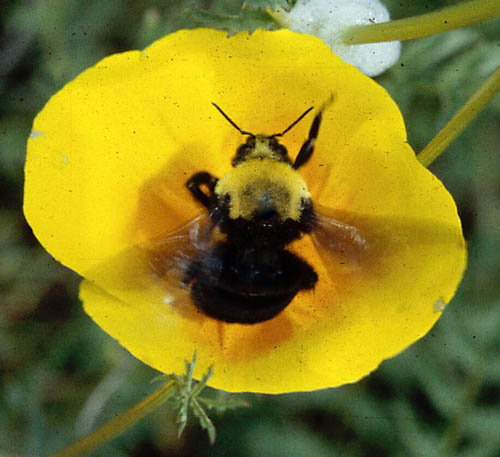
Interstate commerce of the eastern bumble bee is still essentially unregulated; and it has apparently imperiled American, yellow-banded, western and rusty patched bumble bees and caused the probable extinction of the Franklin’s bumble bee which hasn’t been seen since Thorp observed it in 2006. All five species were common 20 years ago.
At least APHIS forbids importation of bees from other nations except Canada, but between 1992 and 1994 it permitted western and eastern bumble bee queens to be shipped to Europe for rearing and their colonies to be distributed throughout North America. While the bumble bee fungal disease Nosema bombi is apparently native to North America, Thorp hypothesizes that a more virulent strain was introduced by the foreign-bred colonies. But Dr. Sydney Cameron could find virtually no observable difference between native and European Nosema. She suggests that commercial colonies might have had higher prevalence of Nosema, which spread to wild populations.
In any case, the sudden demise of the five common bumble bees — which, save for the American bumble bee, are closely related — corresponds precisely with bumble-bee commercialization in North America. I asked Thorp if pesticides, known to devastate bees, might have been partly responsible. “That doesn’t make sense,” he said, “because other bumble bee species in the same areas are doing well.” Of course, pesticides could weaken more vulnerable species, enhancing risks of infection. Cameron’s lab is investigating that potential.
In addition to Nosema, commercial bumble bee colonies in the U.S. have repeatedly been found to carry such wild-bee-afflicting parasites and pathogens as external mites, gut mites, gut protozoa, deformed-wing virus, black queen cell virus, sac brood virus and Israeli acute paralysis virus.
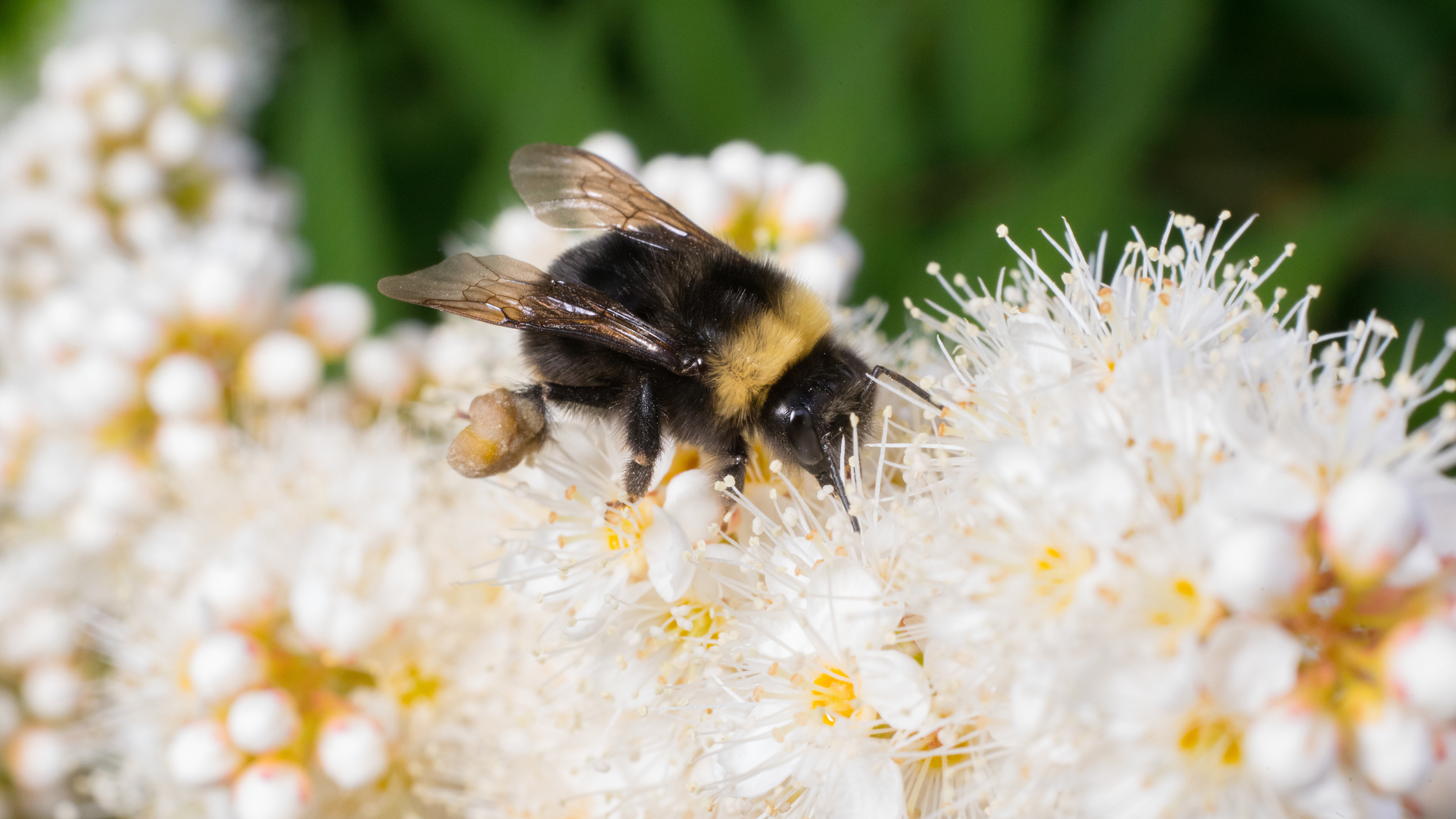
Every year in nations around the world millions of commercially produced bumble bee colonies are imported to pollinate greenhouse plants. They easily escape. In Argentina and Chile buff-tailed bumble bees imported from Europe are driving the beautiful, orange-furred flying mouse, the world’s largest bumble bee, toward extinction. Wherever the alien shows up the native vanishes.
Pesticides, especially neonicotinoids, are doing a number on native bees and honey bees. In the 1990s chemical companies, under pressure to develop safer pesticides for birds and mammals, hatched poisons that could be applied to seeds. These neonicotinoids were indeed less toxic to birds and mammals, but because they’re water soluble and absorbed into pollen they’re deadly for bees and other pollinators. They’re the default pesticide for soybeans and corn, yet research has shown them to be ineffective. One three-year study revealed zero corn yield benefit from neonicotinoid seed treatments. Similar results have been seen for soy.
Europe has sharply limited neonicotinoid use, and Canada is in the process of doing so. But our Environmental Protection Agency has yet to act. Last May the U.S. District Court for Northern California ruled that the agency had violated the Endangered Species Act by not adequately reviewing 59 neonicotinoid registrations.
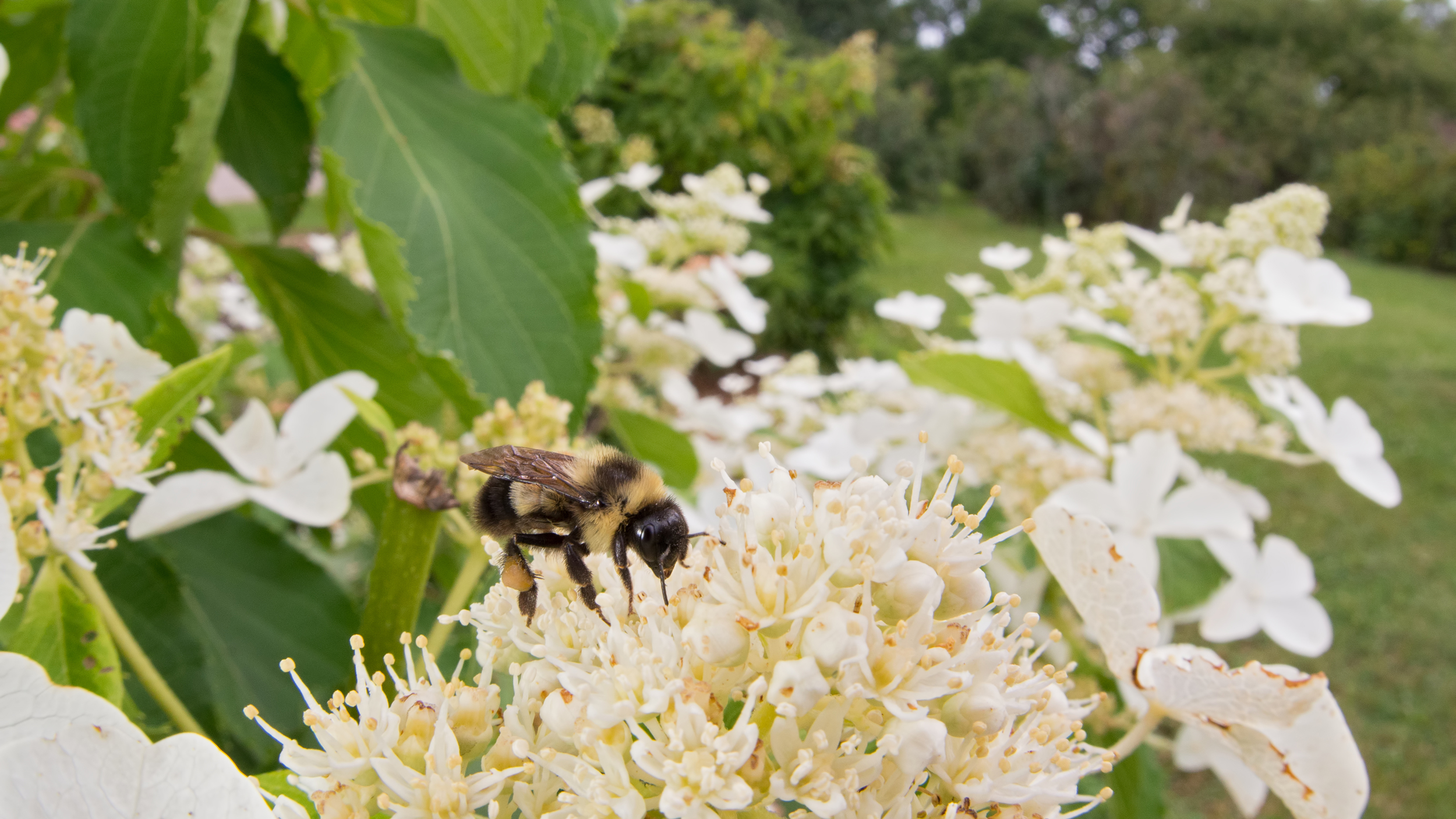
While the EPA has recently published preliminary pollinator-only risk assessments for three neonicotinoids and will be collecting public comments until July 24, the regulation process is slow. Critiquing that process, Aimee Code, who directs the pesticide program for the Xerces Society, notes that EPA gets its information from the companies that make the pesticides. “We’re not expecting final decisions for another couple years,” she says. “And EPA’s assessments are focused on only honey bees and thus fail to protect the more sensitive bumble bees. While a honey bee queen doesn’t forage, the bumble bee queen does, putting her at risk of pesticide exposure. If the queen is killed, the colony is lost.”
On June 23 a bill to better regulate neonicotinoid use — Saving America’s Pollinators Act of 2017 — was introduced in the House by 30 cosponsors.
While the feds aren’t doing much to recover native bees, there’s a great deal the public can do. Native bees need only three things — flowers, nesting sites and a pesticide-free environment. Provide these, and they will come.
How You Can Help Native Bees
To learn what to plant for native bees check out the Xerces Society’s Pollinator Resource Center.
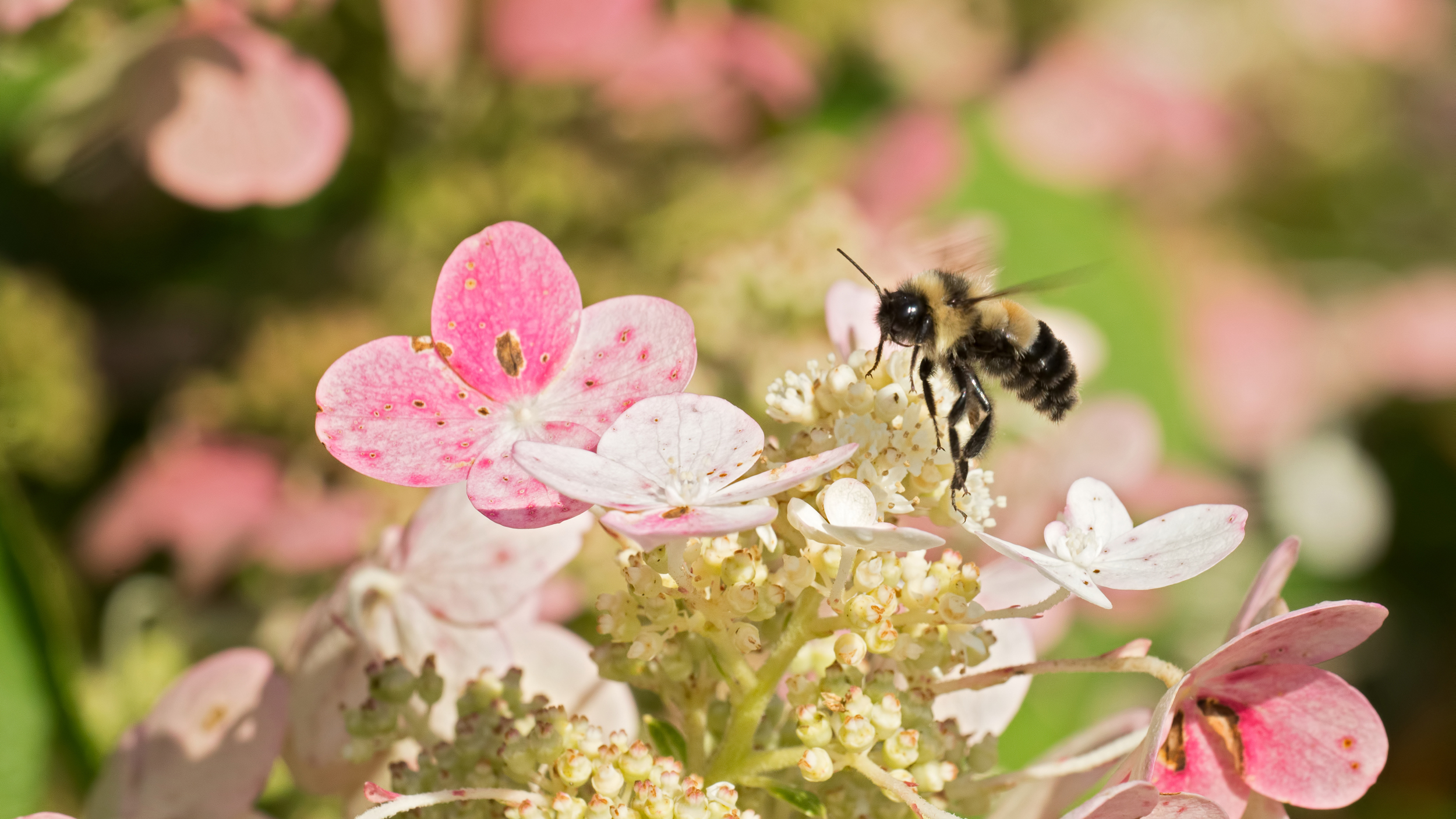
You destroy bumble-bee nests sites by mowing, so let part of your yard go back to nature. When you do mow leave lawn clippings in an out-of-the-way pile; some bumble bee species will nest there.
If you want predator insects like lacewings, assassin bugs, garden spiders and praying mantises, you have to have a few pests for them to eat. But major pest infestations are symptoms of greater problems such as poor soil, wrong pH, too much or too little water or sun. Fix these, and you won’t need pesticides.
“Urban areas can provide amazing habitat for our native bees,” says Code. “You should never feel your own backyard isn’t enough. Urban areas have great diversity which can be better than a monocrop with, say, miles of corn.”
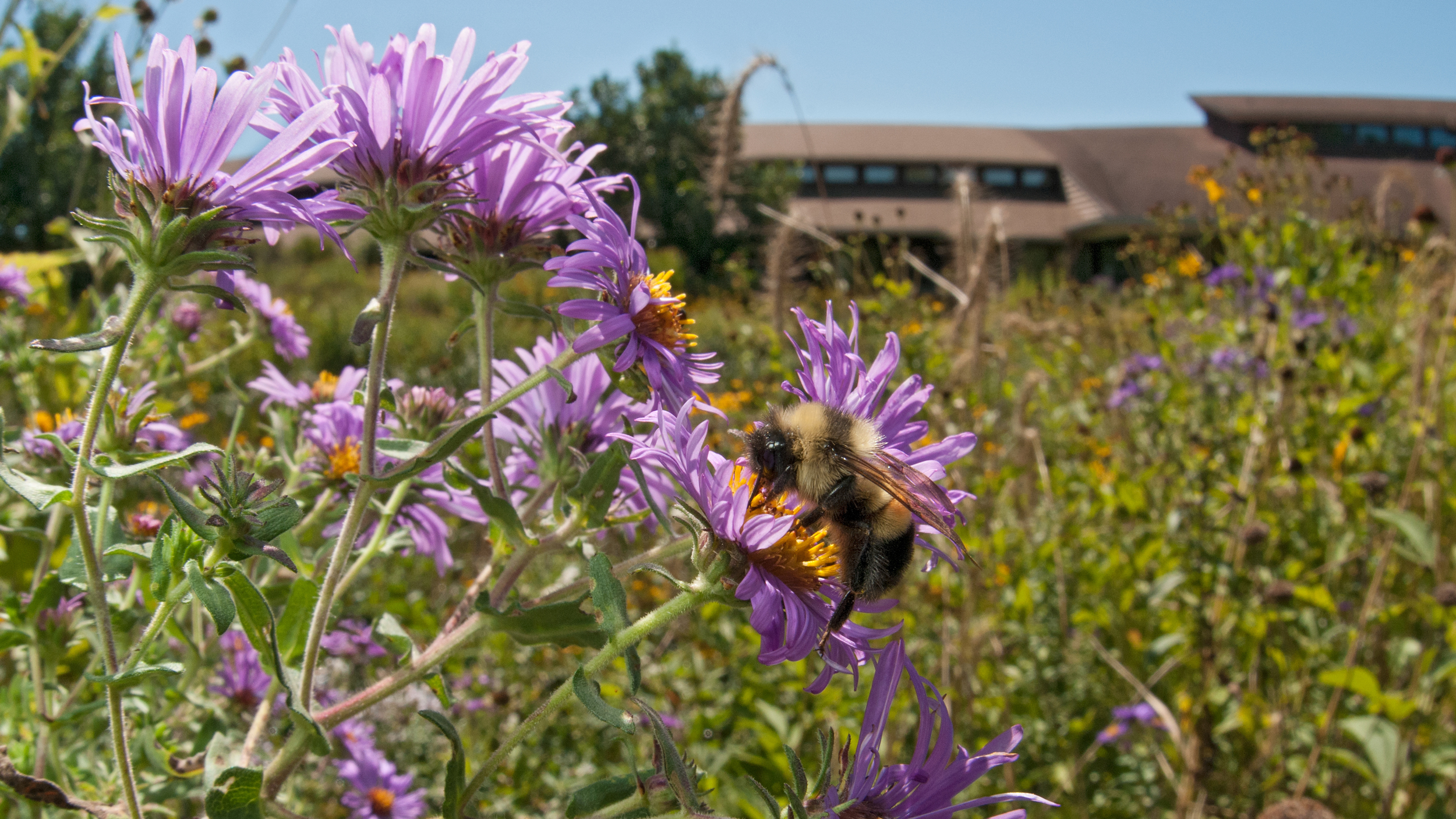
Learn to identify bumble bees by: 1. ordering Bumble Bees of North America: An Identification Guide, by Paul Williams, Robbin Thorp, Leif Richardson and Sheila Colla, 2014. Princeton, University Press; 2. downloading this online field guide and this one from Bee Spotter and 3. downloading these flashcards.
Participate in these citizen-science projects: Bumble Bee Watch and BeeSpotter.
Take the Pollinator Protection Pledge.
Finally, download Clay Bolt’s superb film A Ghost in the Making — about his successful search for and advocacy of the rusty patched bumble bee.
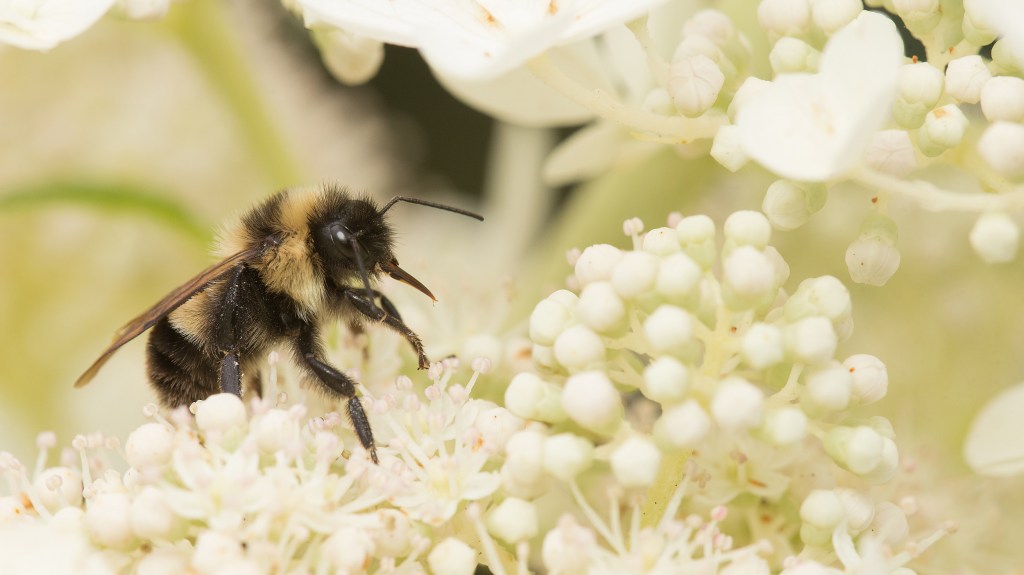



In January 2017, I sent to President Trump a letter requesting EPA begin banning use of neonicotinoids and Roundup, along with my one newspaper article announcing the Rusty-patched Bumble Bee now listed as endangered. My hope is to help make an impact on slow-moving government management to curtail pesticide and weed and grass killers. More efforts will continue on my small part. Bees collect funguses for their food/honey, and Roundup kills everything, including what bees add to their bread mix. We will plant flowers for the bees, but big box stores sell pesticide-treated flowering plants. Oh, there is much to be done to help the bees, as well as the butterflies and every other pollinator.
I support all efforts to save the bumble bees. For the past 25 years I have left 1/2 the property free from pesticides and have planted coneflowers, black eyed Susan’s, flock, butterfly bushes, numerous azalea, lavender and other perennial plants. I see many bumblebees and enjoy that I can be near them without them flying away. We need more land that can remain available not only to the bees but all wildlife.
I have seen many of the rusty bumbels in Wayne National Forest in Ohio. They seem well and are just doing what bumbels do,collecting pollen. I was wondering if the big yellow clumps clinging to the legs of the busy creatures were clumps of pollen or a parasite.
this was a very interesting and important article . I hope we can raise public awareness higher
National geograpjic would seem a good partner in getting the public informed and sympathetic
I’m really concerned. I have plants on and around my apt. Patio, every year and have not seen many bees. I even have grape jelly, and sugar water for birds. I have seen few bees. My flowers don’t seem as big and beautiful as previous years.
Thanks for sharing this great post! i am a bee keeper, which i mostly focus onmanuka honey!
Right you are Anne. It is indeed hydrangea macrophylla. Thanks very much. I’ve alerted my editor. He’ll make the fix.
read Prof Dave Goulson’s book on bumble bee crises in S America, he’s a great scientist.
Also, that male Rusty patched bumble bee is not on Joe Pye weed, it is on hydrangea macrophylla
Bruce: You missed Thorp’s point. It was this: It doesn’t make sense that pesticides could have knocked five common bumble bee species down to the point of being threatened with extinction and not in the slightest way affected other bumble species that share the same habitat. No one, least of all Thorp, would deny the possibility that in some areas pesticides may be weakening some bumble bees species, making them more vulnerable to parasites and pathogens.
Glad to see this get “out there”, but the article seems somewhat schizophrenic, as the following statement from the article seems to contradict much of the rest of it.
“I asked Thorp if pesticides, known to devastate bees, might have been partly responsible. “That doesn’t make sense,” he said, “because other bumble bee species in the same areas are doing well.” Of course, pesticides could weaken more vulnerable species, enhancing risks of infection. Cameron’s lab is investigating that potential.”
it would be a sad world indeed without American produced honey.
Fabulous article exposing the EPA and chemical companies of dragging their feet while they rake in the profits of yet more chemical use–neonicotinoids. Why are other countries years ahead of us on regulating or eliminating the use of chemicals in the environment? It just comes down to money and greed. Thank you, Ted Williams, for always getting to the bottom of the issues. We all need to be passionate about saving the bees.
Great GREAT article! Thank you so
much. I learned a lot.
Interesting to know the honey bee is not native. I’ll be looking at bumbles with more appreciation now
Great article. Thank you, thank you, thank you! Thank you first for focusing on native bees. And thank you even more for going well beyond the “just plant lotsa flowers” pollinator advice that is beloved by industrial farm groups and corporations.
Not that native bees don’t need many more flowers, especially natives. They do. But we also need to face the serious threats posed by neonicotinoids and the commercial bumblebee industry, threats that are rarely covered by mass media.
Here in the Upper Midwest Cornbelt, U.S. taxpayers are funding expensive “pollinator plantings” on former cornfields. That’s not a bad idea. But meanwhile, adjacent corn and soybean fields are planted with neonicotinoid-treated corn and soybean seed. The toxic dust that rubs off those seed coatings during planting can really travel in the wind during spring, which is when many native pollinators are foraging.
Later, those adjacent fields are also often treated with more insecticides and/or with dicamba herbicide, which easily drifts and damages wildflowers. I attended an official pollinator field day for farmers last month, during which it was discovered that many of the featured pollinator flowers had been deformed by herbicide drift.
To save native pollinators in the Upper Midwest, we need to stop subsidizing the ecological madness that is conventional corn and soybean production. And we need to reward the innovative farmers who are truly helping pollinators. It’s no coincidence that those same farmers are almost always helping water quality, soil health, and other wildlife.